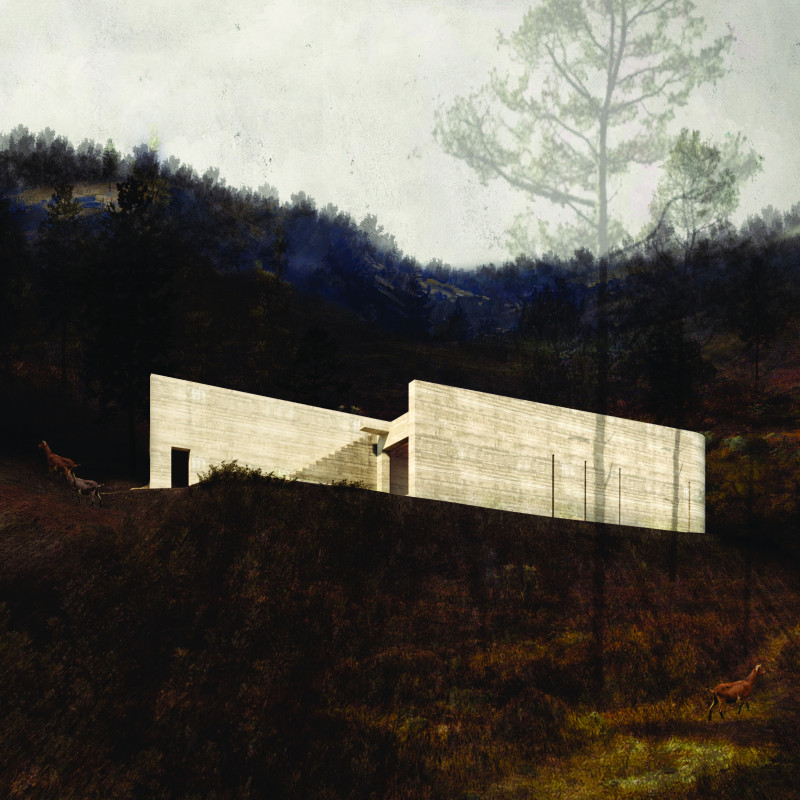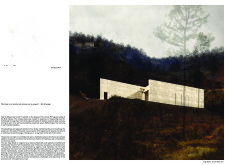5 key facts about this project
The Yoga Shala at Vale de Moses is located in the quiet valley of the River Zêzere in Portugal. Designed as a space for yoga practice, it offers a peaceful environment for reflection and growth. The focus is on simplicity and functionality, which allows practitioners to concentrate fully on their activities without outside distractions.
Architectural Concept
The design emphasizes creating a meditative space that fosters stability and balance. The layout is open and adaptable, catering to both individual and group practices. This flexibility supports community interaction, while also ensuring that the environment remains conducive to personal introspection.
Natural Light and Ventilation
Natural light plays an important role in the experience within the Yoga Shala. Thoughtful daylight analysis has influenced the placement of windows and openings to enhance the interior’s atmosphere. This design choice allows for adequate daylight while also ensuring thermal comfort, reducing the need for artificial lighting. The result is a bright and inviting space that promotes well-being onsite.
Materials and Sustainability
Rammed earth is the primary material used in the walls, chosen for its thermal efficiency and tie to the local context. This material provides significant thermal mass, helping to regulate indoor temperatures in response to the region’s fluctuations. The addition of a thermal labyrinth takes advantage of the day-to-night temperature variations, improving the building’s energy use.
Water Management Systems
Water management is an essential aspect of the design. The project incorporates systems for rainwater harvesting and greywater recycling, which help minimize water consumption. An open water collector is featured, serving as a natural pool that cleans itself using biological filters and plants. This ecological approach not only reduces chemical use but also adds to the visual appeal of the space.
The central Manipura light is a distinctive feature that enhances the overall atmosphere. It adds warmth and depth, making the interior inviting for yoga and reflection, while maintaining focus on the practice and its spiritual significance.





















































